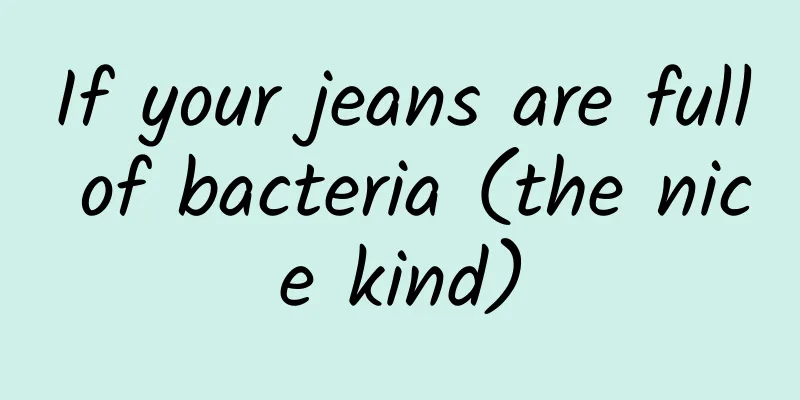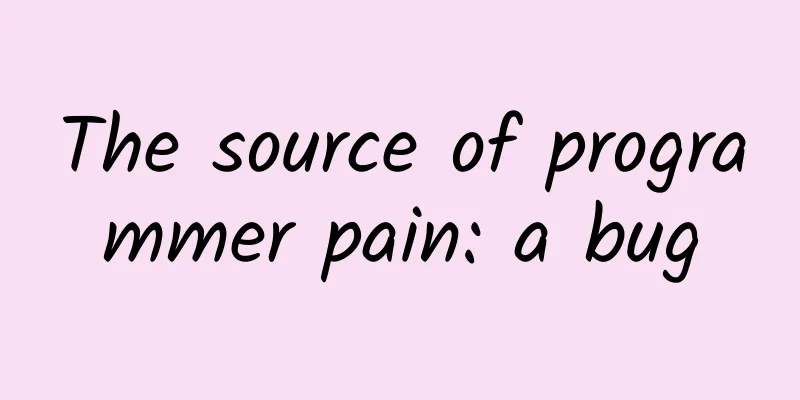If your jeans are full of bacteria (the nice kind)

|
We wear jeans in all styles and colors, but there is one shade that is the most popular and never goes out of style, and that is indigo . To satisfy people's never-ending passion for blue denim, factories produce more than 45,000 tons of synthetic indigo dye every year. Such a large output brings with it a number of environmental concerns. First of all, the raw material for synthetic indigo is aniline , a petrochemical product. The process of synthesizing indigo also involves a variety of toxic and harmful chemicals, such as hydrogen cyanide, formaldehyde, strong alkali, etc. Secondly, indigo is slightly soluble in water , which means that during the dyeing process it must first be converted into a water-soluble form - indigo white, which is called leuco indigo. The indigo white is adsorbed onto the fiber surface in the fabric and then re-oxidized into indigo before the fabric is dyed blue . Indigo dye, source: botanicalcolors This process produces a large amount of corrosive sulfate and sulfite waste, which in turn corrodes the pipes and other equipment of the dye factory. Most of the waste is discharged into rivers and streams, causing great pollution to the environment. The ecological consequences of the booming fashion industry and the increasing demand for clothing dyes have continued to be severe . Part 1 E. coli gives the answer Should we sacrifice our passion for denim for the sake of ecology? Scientists have a solution. They announced that they have developed an environmentally friendly technology to produce denim raw colors. Researchers commented in the journal Nature Chemical Biology that the technology is not yet commercially viable, but it is expected to " innovate the long-standing but unsustainable indigo dyeing process ." This method uses laboratory-grown E. coli to produce indigo and apply it to jeans dyeing . E. coli is a type of bacteria that is very closely related to our daily lives. It is a capsule-shaped intestinal bacterium under a microscope and is also one of the simplest organisms. So how do bacteria color jeans? Inspiration comes from nature . First of all, some plants have " precursors " of indigo pigment, which can be transformed into indigo pigment after certain chemical reactions. For example, indoxyl contained in woad is not very stable. The plant itself converts it into stable indole glycoside (Indican) under the action of glucosyltransferase for easy storage. Perhaps you have discovered that the English of these complex chemical terms is homologous to indigo . Under artificially controllable environmental conditions, indoxyl will be converted back to indoxyl, and then, due to its instability, it will oxidize to form indigo, which will dye the leaves blue. Therefore, referring to this process and using genetic engineering methods, the researchers implanted the glucosyltransferase gene from woad into Escherichia coli. In this way, Escherichia coli has the ability to synthesize indole glycosides. These indole glycosides are then extracted, dissolved in water, and converted back into indole under the same environmental conditions. After oxidation, indigo dyeing was successfully achieved. A colony of E. coli bacteria genetically modified to produce the dye indigo. Source: pixels This is a good example of learning from nature. The dyeing method of bioengineering is more environmentally friendly than the traditional chemical synthesis method, and reduces a lot of chemical pollution . Part 2 Look at the blue fungus, the clothes are full of green In fact, the use of plants and microorganisms as natural dyes has a very long history. For example, China's traditional folk tie-dyeing technique has rich colors, natural changes and endless fun. This technique has inherited seasonal changes for thousands of years, taking from nature and using it for nature. However, in the 19th century, with the introduction and development of synthetic dyes , chemical fabric dyeing replaced traditional plant dyeing due to its standardized and large-scale production. Compared with plant dyeing, chemical dyeing has the advantages of bright colors, low prices, and convenient production . Therefore, the traditional crafts and technologies of plant dyeing have been impacted and influenced unprecedentedly. However, in recent years, as the world's environmental awareness has increased, the clothing industry has gradually realized that chemical dyes have hidden dangers such as environmental pollution and health hazards. According to World Bank data, 17%-20% of all industrial water pollution is caused by clothing dyeing or processing. In the pursuit of high-quality, green, environmentally friendly, safe and healthy consumption trends, people are beginning to pay attention to new environmentally friendly dyeing technologies. ****Natsai Audrey Chieza, a synthetic biology designer from Zimbabwe, collaborated with John Ward, a professor of synthetic biology at University College London, to study how to use bacteria that produce pigments to replace environmentally harmful chemical indigo dyeing . She chose Streptomyces coelicolor , a non-pathogenic bacteria commonly found in plant roots , and after repeated experiments found that factors such as pH value, time, temperature, and the size of the culture dish during the bacterial culture process would affect the color presentation . In his experiment, Chiesa soaked a large number of fabrics of different materials in a diluted liquid culture of Streptomyces coelicolor and then placed them on the surface of an agar growth medium. After several days of cultivation, both the surface of the fabric and the space between the fabric and the culture medium were covered with colonies produced by the reproduction of Streptomyces coelicolor. As the colony continues to expand, millions of cells produce a large amount of pigment visible to the naked eye , and time-lapse cameras also record the process of color spreading. This dyeing method can save 500 times more water than chemical dyeing methods, while reducing the production of chemical synthetics that are harmful to the environment. This is a picture of Chiesa inoculating a silk scarf with a small amount of Streptomyces azureus, and then placing it in a petri dish with a diameter of 150 mm for " culture and dyeing ". As the Streptomyces azureus colonies multiplied , the silk scarf finally showed a clear and simple color. Successfully dyed fabric. Source: voordewereldvanmorgen Art critic Liz Stinson was also attracted by its wonderful colors: "I never thought I would want to wear a silk scarf covered with bacteria! But when I really saw it, I was eager to own this piece of art dyed with sky blue Streptomyces!" Bacteria will "spontaneously" produce pigments under conditions of rich nutrition, sufficient oxygen and suitable temperature. Colorifix, a British biotechnology company founded by scientists from the University of Cambridge, "manually" colors bacteria by replicating color DNA information in organisms. The process is this: scrape some pigmented cells from parrot feathers, find the DNA information that can make the feathers change color, and copy this string of DNA information into a certain bacteria so that the bacteria can produce the same color as the feathers. After that, apply the dyed bacteria directly to the textile and heat until the cell membrane breaks. In this way, the bacterial pigment will remain on the fabric , and as the cell membrane on the fabric is washed off, the dyeing is completed, done! Part 3 In "The Devil Wears Prada", the editor-in-chief said to Andrea: "You think that the blue sweater you are wearing is a random choice of your own and has nothing to do with fashion. In fact, its blue color comes from the most authoritative new product launch in the fashion industry. After that, blue clothes became popular in major shopping malls around the world. So the color of your clothes is chosen for you by those who have the right to speak in fashion." So can we imagine that one day in the future, bacteria will also have an important say in the fashion industry and decide for us which blue color to wear today? |
<<: The Earth's rotation is getting faster and faster. Is the Earth also "in a hurry"?
>>: China Birth Defect Prevention Day丨Prevent birth defects and give your children “free love”
Recommend
Can LeTV's mobile phone, with its open vs. closed ecological model, bring Apple down from its pedestal?
"I believe Apple is still the greatest compan...
Xiaomi is going to acquire BlackBerry?
[[134475]] Rumors about Microsoft acquiring Black...
Exclusive interview with Getui CEO Fang Yi: Do a good job in message push step by step
From the era of Internet "quantity" to ...
Krusier Character Illustration Class 2019 Course
krusier character illustration class 2019 Course ...
450 million years ago, this ancient "cute creature" was actually a fierce "catcher" in the ocean
The reporter learned from the Nanjing Institute o...
The virtual reality startup boom is coming: How long will it take to see the spring?
Virtual Reality (VR), a field that is somewhat un...
7 challenges facing Apple Watch app developers
The Apple Watch, which goes on sale for the first...
Analysis of the marketing strategy of the wedding photography industry
Target: A national wedding photography chain clie...
Detailed explanation on how to make Tik Tok short video ads!
What I am going to share with you today is the ad...
China Automobile Dealers Association: Automobile consumption index in June 2023 is 74.2
On June 30, 2023, the China Automobile Dealers As...
Play with short videos and learn how to create a profitable TikTok account from scratch!
Why do Tik Tok ? How to make Tik Tok? For enterpr...
How does Tesla do marketing with zero advertising investment?
They are both beverages, so why can Yuanqi Forest...
The world's largest bacteria has been discovered! It's bigger than a mosquito!
Review expert: Ji Shi Life Field Observer There a...
It’s the same three meals a day, why do you get sick from eating so much?
Three meals a day Why are some people "obese...
Microsoft finally admits there are too many junk apps in Windows 8
Microsoft provides a large number of high-quality...









